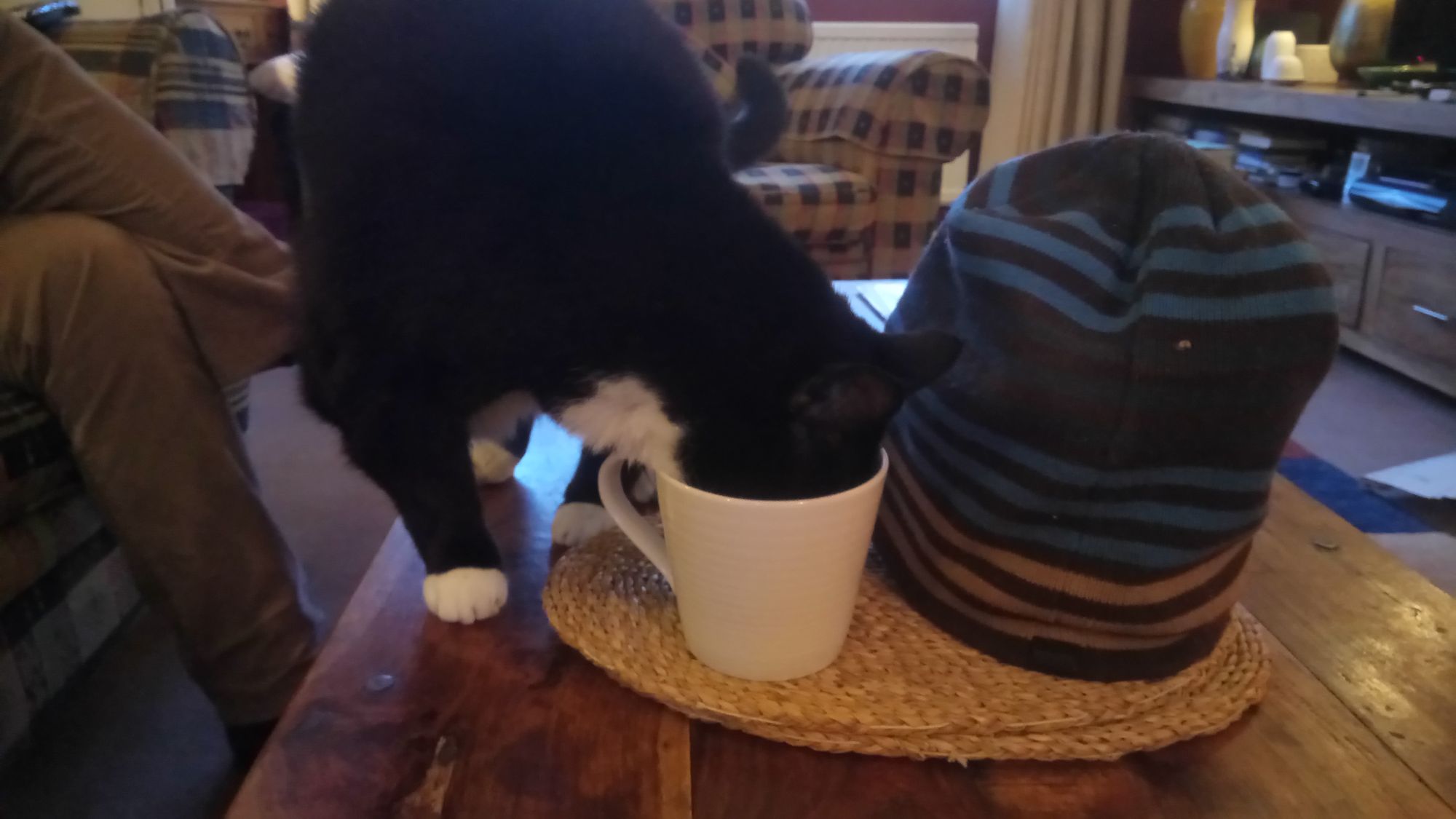Interview: Pippa Smart
The EIC of "Learned Publishing" on editor training, the power of networks, and more

Pippa Smart is the Editor-in-Chief of Learned Publishing, and has been an independent scholarly publishing consultant since 2007. Her work focuses on helping publishers and editors around the world deal with contract negotiation, writing editorial guidelines, flipping journals to OA, writing newsletters, developing training, advising on journal relaunches, and developing processes and standards. She also delivers training for publishers and editors.
Smart is based in Oxford (UK), which once claimed the largest concentration of publishers in the world (Elsevier, Wiley, Taylor & Francis, Oxford University Press, and many other smaller companies), and has worked in scholarly publishing “for longer than I care to remember.”
After earning a degree in Publishing at Oxford Brookes University (previously, Oxford Polytechnic) — the first publishing degree offered in the UK — she took a job as a copyeditor for Blackwell Science working on medical books. She then worked as a production manager at CABI during their major growth phase in both business and technologies, managing production as organizations moved from analog to fully digital systems.
Smart is the Past-President of the European Association of Science Editors (EASE) and currently a Director of the World Association of Medical Editors.
She now works from home in a small village outside Oxford. Her “in-office teammates” consist of one “tea-making husband, and a complaining cat.”

Q: You’ve worn a number of hats so far in your career, from production manager to Editor-in-Chief to President of an association of science editors to consultant. What’s the common thread?
Smart: I guess a key thread in all that I do is that I hate being pigeon-holed into one department, discipline, or area of the industry. I am also an inveterate gossip and endlessly curious. Being constantly nosy and alert to news, trends, and initiatives has served me well, and I have built up a wide range of knowledge about scholarly communication which allows me to see the bigger landscape and find links and associations between different areas. Every one of the jobs I have done and the experiences I’ve had have all served to provide me with more information to take to the next project.
Another common thread in the past 20 years or so is a concern about the lack of support we give the editors who are responsible for ensuring the quality of science that is published. It’s easy to be flippant about the transient nature of what is published and the fact that every journal publishes bad science at some point; but every decision to accept or reject an article can have huge repercussions for the authors and for the world — what if Einstein’s paper on the Electrodynamics of Moving Bodies had never been published? Many publishers assume that a good researcher will make a good editor, but in 20 years of training and advising editors, I can tell you that there is no correlation between the two.
I have worked with editorial teams that have shocking editorial practices — but nobody has told them. I see publishers who operate terrible peer review systems which directly contribute to reviewer overload, and high-impact journals that don’t always follow the standards on which they set their reputation.
We pay little attention to supporting editors at our peril, as some publishers have discovered, but I still find it a scandal that editors are appointed, shown how to use the submission system, sent a few links to resources, and left to get on with things.
As you can tell, this is my “soapbox” issue, and I could go on, and on: so I’ll step down now.
Q: Learned Publishing seems to have gained in prominence in the last few years. Is that an accurate perception? If so, what factors have contributed?
Smart: Yes, the past 5 years has seen a large change in the journal. I’ve been really lucky to be at the helm during all of this. When I took over we struggled to obtain sufficient content for each issue, and we mostly had to commission pieces. We are now lucky enough to be in a position to reject about half of our submissions (although I always hate this part of being an editor) and have more than enough for each issue: this year has seen a 50% increase in submissions (although this may well be a blip due to the conditions). We also now include much more original research content, so the journal has changed into more of an academic, scholarly journal, than it was previously.
I think there are several reasons for the change. One may be inclusion on the Wiley platform, which we moved onto in 2015. Prior to this we self-published, and we simply didn’t get the visibility of being part of a large journal package. I would like to think that the other reasons for the change included the following activities (which are based on my own training course for editors, so I needed to follow my own guidelines!):
- A lot of networking — and I mean a lot. Particularly at the beginning, I spent a lot of time approaching authors and new reviewers. Whenever I saw an interesting article or research I reached out to the author to say hello, discuss their article/research and ask them about submitting to us. For every submission I make a point of inviting a reviewer who may not have heard of us — as a way of introducing us to them and raising our visibility with them.
- I also spend a lot of time on articles. In the first few years I worked closely with several authors to entirely re-write their articles (remember I said that researchers don’t always make good editors — well neither do they always make great authors). We still do this where the content of the article is great, but the delivery lets them down — after all, we want people to read our articles.
- We also restructured the journal, introducing new article types and recreating our vision and aims and scope to make them more attractive and relevant to our community.
- We restructured our editorial board, bringing on more people, extending our network (although there is still work to be done with diversification).
- We introduced the thematic January issue which provides a chance to contact new authors and commission content, and helped us to create collections which we hope are useful to our readers.
- And finally, I use Twitter a lot to spread the key items that our articles are reporting, which has raised our visibility more broadly.
In all of this I have been fantastically supported by our North American Editors, Judy Luther in the first couple of years and Lettie Conrad since then — I couldn’t have done much of this without them.
Q: As you see research come through, what trends are you observing? What’s the leading edge of research and thinking like now compared to 5-10 years ago?
Smart: It has been an interesting run. Most Western publishers prefer producing White Papers and Company Reports to the formality of an academic article. The shorter, opinion pieces and Industry Updates are more likely to come from this group. This skews the research that we publish, which mostly comes out of non-western academia. Predatory publishing was a key trend a few years ago, and seems to be re-emerging again. Early Career Researchers has been a constant theme for a while, and interestingly there are relatively few papers on peer review compared to a few years ago. It is difficult to pin down key themes as our articles cover a wide range and there are no dominant topics. The last issue, for example included articles on diversity and equity in publishing, publishing behaviour in the current pandemic, ECR publishing attitudes, the operation of small publishers, a study of Vietnamese publishing, predatory publication, academic publishing studies and how publishing should be reformed. Quite a mixed bag.
Q: Europe seems to be on a definite path in some ways, while other nations or regions are less set in their plans. Is this a benefit to Europe? Or a risk? Why?
Smart: Western researchers are generally well-informed about how and where to publish, and increasingly knowledgeable about open access. This makes them more willing and able to take advantage of the new journals and models that are emerging in the western (particularly) European publishing environment as a result of pressures for open access and open science. But in many other regions there remains top-down pressure to publish in high impact, traditional, journals, which is often coupled with an inability to find the requisite APCs. Therefore I believe that the current pressures from the funders and the responses from publishers may lead to a changing content diversity within journals.
I am seeing a desire for more open publishing within other regions, but this often comes into direct conflict with the academic reward system which looks to established, traditional, high-impact journals. (There is a similar conflict in Europe and the US, of course, but this is changing in response to open science.) It should be noted, however, that the western commercial model of journal publishing is not the norm in many other regions where institutionally-funded journals that publish free-to-view (but usually under an “all rights reserved” licence) are far more common.
At a workshop for Kenyan editors many years ago, during a discussion about APC-funded journals one editor said: “in the current (subscription) system only the rich can read research, but in the APC-funded system only the rich can publish — why is that better?” It’s a comment that speaks to world views that are often ignored.
I can understand the frustration of the European funders who feel there has been little movement from publishers towards a more cost-effective publishing model, and it would be impossible to attempt a global multilateral approach to flipping towards an open system. However the unilateral approach taken by Plan S, etc., is likely to unbalance the content submitted to, and published in European journals. If the journals rely on APCs provided through block funding (via universities or funders, for example) then this has the potential to limit the content that they publish (e.g., no author outside the funding “ring” may be able to find the requisite APC). This has the potential (at the worst extreme) to redefine the journals away from an international to a more regional perspective. Whether this is a good or a bad thing depends on your perspective: the funders are mostly concerned with the publication of research that they fund, and less about other research and other publications.
Q: Are there research questions you wish someone would address, but which remain unexamined?
Smart: Publishers undertake a lot of interesting and useful research, but — as said above — the preference is for un-reviewed White Papers and other grey literature rather than formal publication. Rather than specify any topic that I would like to see researched my first priority would be to capture and ensure the same quality (peer reviewed) standards for publisher research that we apply to academic research. I find it incredibly frustrating to see all this data published without the rigor of academic research reporting, and published in such a way as to make it temporary — no archiving — and difficult to build upon.
Q: How are factors like diversity and inclusion affecting Learned Publishing, the Association you guide, and the companies you consult with?
Smart: A timely question. At the journal we are currently re-evaluating our editorial board to increase diversity, so I’ll be able to answer this more fully this time next year. We also keep a watch on authorship and reviewers to check our global representation and although we can’t directly influence authorship, we constantly strive to increase reviewer diversity. At the European Association of Science Editors (EASE) diversity is also an item on our agenda, so we monitor our membership and leadership diversity and are making efforts with our new Council (to be appointed next year) to ensure representation. It is an issue with some of my clients, but my — and their — emphasis on the need for editorial diversity has always been on the agenda and is not a new item.
Q: ALPSP itself seems to have evolved significantly in the last decade. How would describe this change? What factors contributed, do you think?
Smart: ALPSP is very member-focussed, and keen to help upskill publishers. This has led to increasing efforts over the past decade to provide a growing list of events. They are also taking a stronger stance with advocacy. The strength of the organization is that although members include all the large publishers, and ALPSP seeks to represent everyone, their real focus is on society/association publishing. This bias gives them greater ability to enter discussions on difficult issues (e.g., OA mandates) because they are representing the interests of the learned societies and associations, who are generally considered to be a key component of the research environment. Changes within any organization come from both outside and inside, and the strategy of ALPSP is strongly influenced by the Council members, and by the members via the secretariat. Every new member of Council brings their own knowledge and interests into the organization so has a direct influence on how ALPSP develops.
I’ve been involved with ALPSP since I ran their first training event back in the late 1990s, and I write their monthly newsletter, so I am somewhat biased about them.
Q: What are the big challenges you see coming for scholarly and learned publishers in the next 5-10 years?
Smart: Finance. Technology. Opinions. New entrants. Funders. Self-publishing. Nationalism versus globalization. Openness. Recouping OA investment long-term. How long have you got . . . ?
